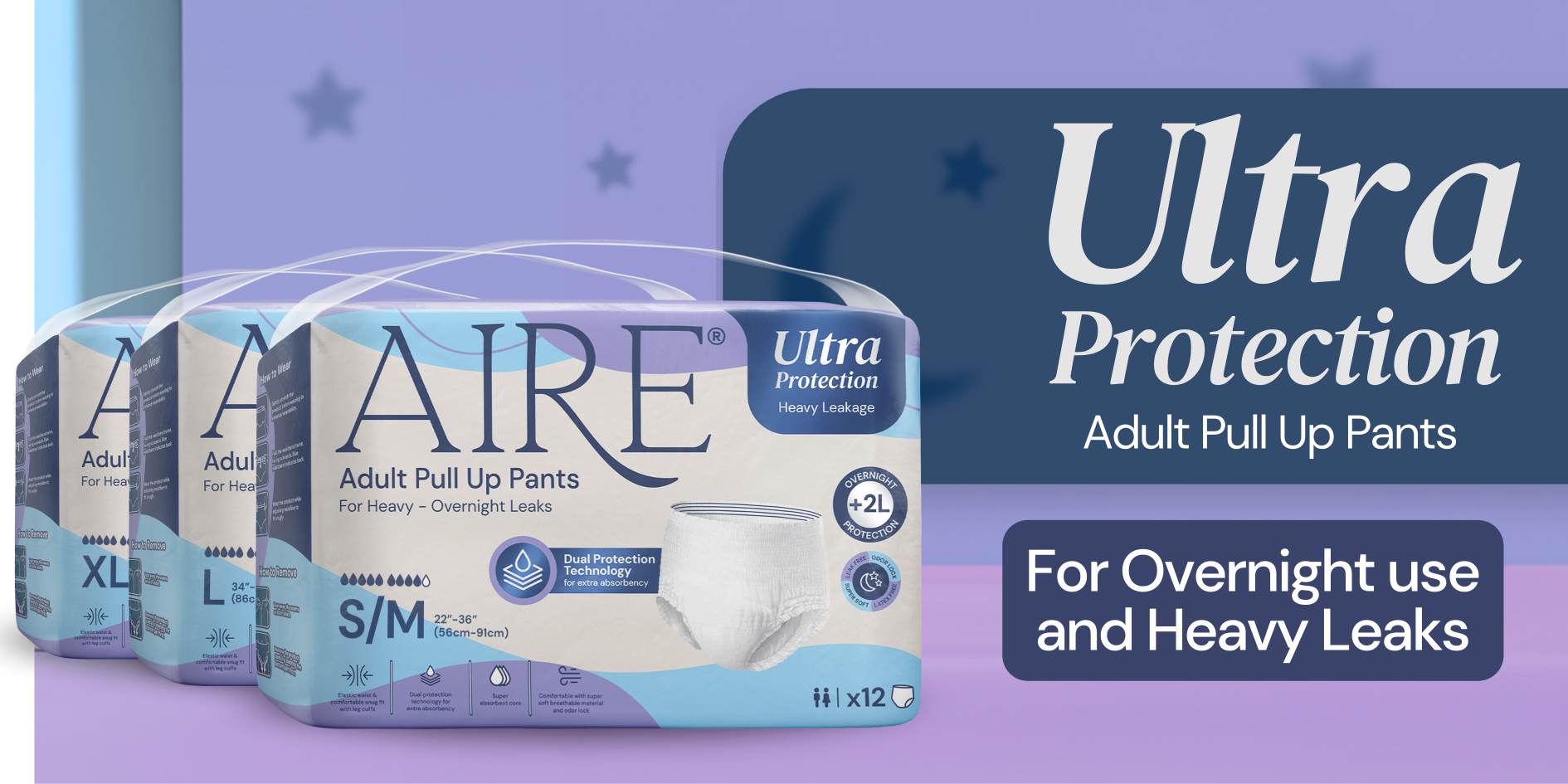Adult incontinence is a common condition that affects up to 400 MILLION people worldwide - if it was a country, it would be the third most populous! It refers to the involuntary loss of urine or feces in adults. While it can be an embarrassing and inconvenient problem, it's important to understand that there are different types of adult incontinence, each with its own causes and treatment options. In this blog post, we will explore the various types of adult incontinence:
1. Stress Incontinence
Stress incontinence is the most common type of adult incontinence, especially among women. It occurs when there is pressure on the bladder, leading to urine leakage. This pressure can be caused by activities such as coughing, sneezing, laughing, or exercising. Weak pelvic floor muscles, hormonal changes, and childbirth are common causes of stress incontinence.
2. Urge Incontinence
Urge incontinence, also known as overactive bladder, is characterized by a sudden and intense urge to urinate, followed by involuntary urine leakage. It is often caused by an overactive detrusor muscle, which is responsible for bladder contractions. Neurological conditions, such as Parkinson's disease or multiple sclerosis, can contribute to urge incontinence.
3. Overflow Incontinence
Overflow incontinence occurs when the bladder doesn't empty completely, causing it to overflow and leak urine. This type of incontinence is more common in men and can be caused by an obstruction in the urinary tract, weak bladder muscles, or nerve damage. Symptoms include frequent urination, weak urine flow, and a feeling of incomplete bladder emptying.
4. Functional Incontinence
Functional incontinence is not related to bladder or urinary tract problems but rather to physical or cognitive limitations that prevent a person from reaching the bathroom in time. This type of incontinence is often seen in older adults who have mobility issues, arthritis, or dementia. It can be managed by making environmental modifications and providing assistance when needed.
5. Mixed Incontinence
Mixed incontinence is a combination of two or more types of incontinence, most commonly stress and urge incontinence. It is a complex condition that requires a tailored treatment approach. The causes of mixed incontinence can vary and may include a combination of weak pelvic floor muscles, nerve damage, and hormonal changes.
If you or your loved ones experience incontinence, it is imperative to speak to a doctor or a healthcare professional to understand the best course of action in managing and understanding the cause of incontinence.



 Whatsapp us!
Whatsapp us!